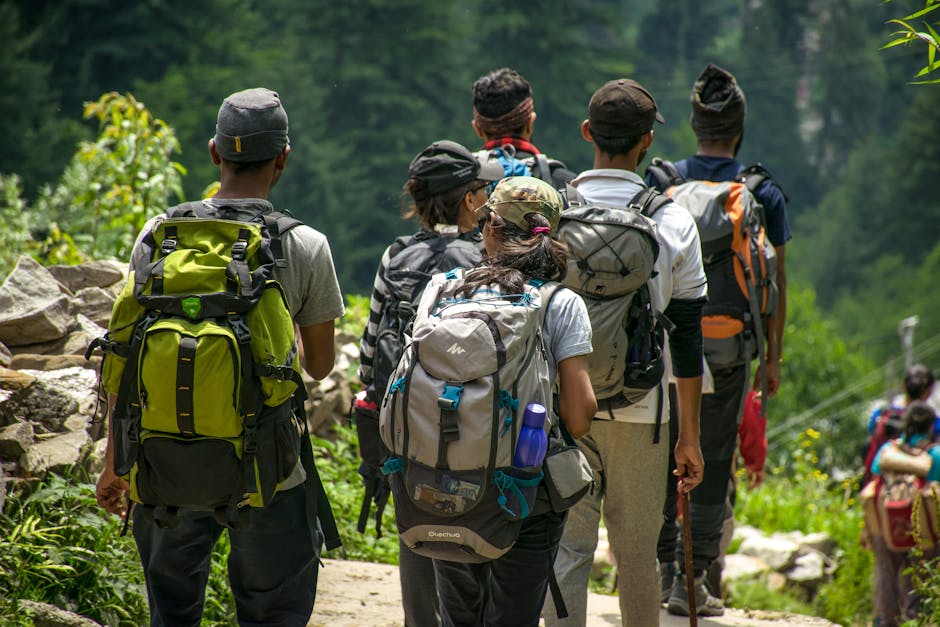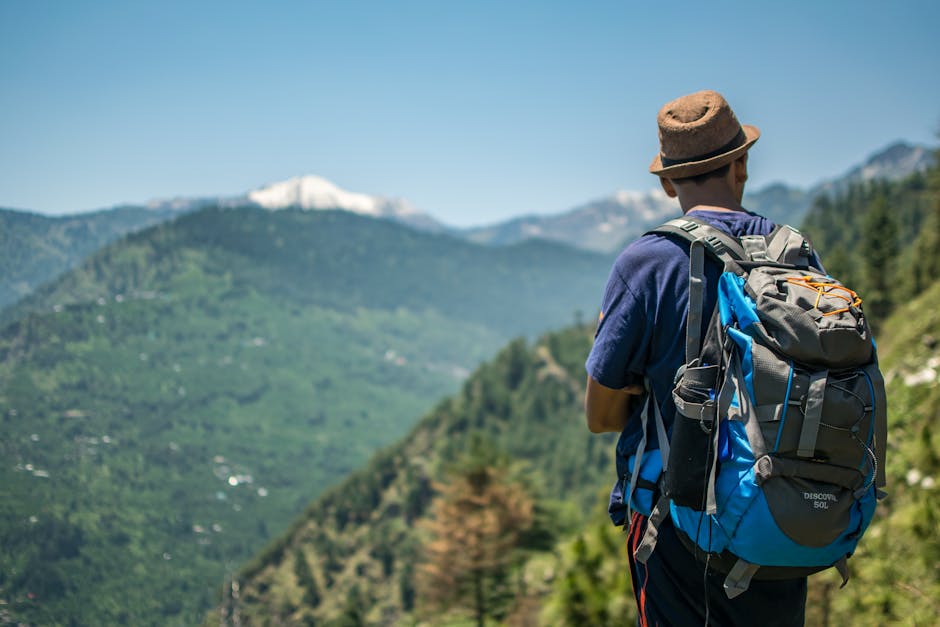Hiking Through the Untamed Wilderness of Patagonia, Chile and Argentina
Stretching across the southern tip of South America, Patagonia offers some of the most rugged and pristine landscapes on the planet. Spanning both Chile and Argentina, this vast wilderness is a paradise for hiking enthusiasts, with towering mountains, glaciers, dense forests, and sweeping steppes. The region’s remoteness and untamed beauty make it a unique destination for adventurers seeking to connect with nature on a deeper level. While Patagonia's wild terrain can be challenging, the rewards of hiking through this vast expanse are incomparable.

Each section of Patagonia offers its own unique experiences. On the Chilean side, you'll find the famous Torres del Paine National Park, home to breathtaking granite peaks and glacial lakes. Meanwhile, Argentina’s Los Glaciares National Park boasts immense glaciers and some of the most iconic trails in all of South America. While hikers will encounter varying weather conditions and terrain challenges, careful preparation and respect for nature ensure that these journeys become memories of a lifetime.
The Diverse Landscapes of Patagonia
Patagonia is renowned for its diverse geography, which shifts dramatically from north to south. In the northern stretches, you’ll find lush forests and alpine meadows that gradually give way to arid steppes as you move further south. One moment you might be hiking along crystal-clear rivers framed by snow-capped peaks; the next, you could be crossing wind-swept plains where few trees grow.
- Torres del Paine: Located in southern Chile, this national park is one of Patagonia’s crown jewels. Known for its dramatic "towers" of rock (the Torres), it offers a variety of hiking routes including the challenging "W" trek.
- Los Glaciares: On the Argentine side, this park is famous for Perito Moreno Glacier and Mount Fitz Roy. It’s a haven for ice trekking enthusiasts and those who wish to experience one of Earth's largest glaciers up close.
- Tierra del Fuego: The southernmost tip of Patagonia presents a stark contrast to its northern counterparts with its colder climate and isolated feel. It's often referred to as 'the end of the world' due to its extreme remoteness.
Best Time to Visit
The optimal time to explore Patagonia largely depends on what activities you're interested in. Generally speaking, the best hiking conditions can be found between November and March when summer temperatures make trekking more manageable. This period also brings more tourists to popular parks like Torres del Paine and Los Glaciares.
If you're looking for solitude or prefer cooler weather, consider visiting during Patagonia's shoulder seasons (October or April) when trails are less crowded but still accessible. Winter (May to September) can be harsh with freezing temperatures and snow, making many trails impassable or closed altogether.
Challenges and Precautions
Hiking in Patagonia comes with its share of challenges. Weather conditions are notoriously unpredictable; it’s not uncommon to experience all four seasons in a single day. Strong winds are another hallmark of the region, especially in exposed areas like Torres del Paine’s high ridges or along Argentina's Patagonian Steppe.
Given these variables, hikers must come prepared both physically and mentally. Packing proper gear (including layers that can withstand wind and rain) is essential. A sturdy pair of hiking boots will also help navigate rough terrains like rocky paths or muddy riverbanks after rainfall.
- Avoid relying solely on GPS: While modern technology is helpful, it’s wise to carry physical maps as some areas have limited or no reception.
- Leave no trace: Respecting the environment is crucial in preserving Patagonia’s fragile ecosystems. Always clean up after yourself and avoid disturbing wildlife.
- Hire a local guide: For those unfamiliar with remote trekking or those seeking deeper insights into flora and fauna, hiring an experienced guide enhances both safety and enjoyment.
Must-See Wildlife
The wildlife in Patagonia is as varied as its landscapes. Along your hikes, you may encounter guanacos (a relative of the llama), condors soaring overhead, or even pumas stalking their prey in more remote areas. Coastal regions such as Tierra del Fuego are home to penguins, sea lions, and sometimes even whales during migration season.
Birdwatchers will find plenty to marvel at too, Patagonia hosts over 400 bird species across its diverse environments. Keep an eye out for the Andean condor or Magellanic woodpecker while trekking through wooded regions like those found near Los Glaciares National Park.
Sustainable Tourism in Patagonia
The growing popularity of Patagonia as a destination has led to increased awareness around sustainable tourism practices in recent years. Many national parks have strict visitor limits during peak seasons to minimize environmental impacts on fragile ecosystems. Additionally, initiatives promoting eco-friendly accommodations and guided tours focused on conservation have gained traction.
The region also encourages responsible camping practices: most campsites within major national parks require permits that help regulate visitor numbers while ensuring waste disposal systems are followed correctly. Supporting local communities through ethical tourism (such as choosing locally owned lodges or purchasing handmade crafts) also helps preserve cultural traditions while boosting economic growth in rural areas.
Exploring Patagonia offers an unforgettable opportunity to witness some of Earth’s last remaining untouched wildernesses firsthand. From hiking beneath towering granite peaks at sunrise to witnessing massive glaciers calving into icy waters below, each experience here leaves an indelible mark on those fortunate enough to visit.

The combination of unique wildlife encounters alongside breathtaking landscapes makes this region one that continues inspiring adventurers from across every corner globally.
Cultural Significance of Patagonia: A Deep Connection to Nature and Heritage
Beyond its striking landscapes and challenging trails, Patagonia carries deep cultural significance for both indigenous peoples and settlers who have shaped the region's identity over centuries. The vast wilderness not only serves as a testament to nature's raw beauty but also reflects a way of life that has endured in this remote corner of South America. Understanding Patagonia's cultural roots offers travelers a richer, more meaningful experience as they explore its iconic terrain.
Patagonia’s name itself is linked to legend and exploration. When European explorers first arrived in the 16th century, they encountered the Tehuelche people, indigenous inhabitants who had lived in harmony with the harsh environment for millennia. Early explorers, such as Ferdinand Magellan, referred to these natives as “Patagones,” due to their larger-than-average foot size relative to Europeans, which contributed to myths of giants living in the region. Over time, this term evolved into "Patagonia," symbolizing a distant land at the edge of civilization.
For many indigenous communities, including the Mapuche and the Yaghan, Patagonia remains central to their cultural heritage. Their traditional practices revolve around a profound respect for nature and sustainable coexistence with their surroundings. Today, many local guides come from these communities, offering unique perspectives on the natural environment and sharing ancient knowledge of plant life, wildlife tracking, and weather patterns passed down through generations.
The arrival of European settlers in the 19th and early 20th centuries also left a lasting mark on Patagonia’s cultural fabric. Welsh immigrants established small farming colonies in areas such as Chubut Province in Argentina, where Welsh culture is still celebrated through festivals, language preservation efforts, and distinct culinary traditions like tea houses that dot the Patagonian countryside. These communities coexisted alongside indigenous populations, though not always without conflict, particularly during periods when colonization pushed indigenous groups off their ancestral lands.
The gaucho (the South American cowboy) embodies another essential facet of Patagonian culture. Gauchos are known for their rugged independence, often working as sheep herders across the expansive Patagonian steppes. Their lifestyle mirrors that of early settlers who survived by mastering horseback riding and animal husbandry in some of the most isolated regions on Earth. Modern visitors can still experience authentic gaucho culture through estancias (ranches) offering tours that include horseback riding adventures, traditional barbecues (asados), and storytelling by fireside, a glimpse into life on the frontier.
Beyond its historical influences, Patagonia continues to inspire creative expressions through art and literature. Renowned travel writers such as Bruce Chatwin have immortalized Patagonia’s mystique in works like In Patagonia, which paints a vivid picture of his journey across its untamed expanse. Indigenous art, meanwhile, manifests through intricate textiles, jewelry made from natural materials, and paintings that often depict animals like pumas or guanacos, icons of the region's fauna.
By appreciating Patagonia's deep-rooted cultural heritage (whether it's hearing firsthand accounts from Mapuche elders or witnessing gauchos at work) travelers gain a richer connection to this extraordinary land. Such awareness not only elevates the hiking experience but also helps protect local traditions from being overshadowed by modern tourism.
Actionable Tips for Building a Strong Community Network
One essential aspect for adventurers planning a trip to Patagonia is developing strong connections within local communities and among fellow travelers. Establishing these networks enhances both safety and experience while trekking through remote areas. Here are actionable strategies for creating meaningful relationships within this adventure-driven community:
- Join local hiking groups: Connect with organizations based in Argentina or Chile that focus on conservation efforts or outdoor activities. These groups often organize trekking expeditions where participants can share skills and resources.
- Participate in eco-volunteering programs: Many non-profit organizations work on environmental conservation projects throughout Patagonia. Volunteering with these programs not only aids local ecosystems but also creates bonds with like-minded individuals invested in preserving nature.
- Utilize social platforms: Platforms like Facebook or Instagram offer numerous groups focused on Patagonian hiking tips, where members exchange insights about trail conditions or gear recommendations. Engaging with these communities before your trip can provide useful advice while fostering connections worldwide.
- Support locally-owned accommodations: Choosing family-run lodges or locally-owned hostels not only boosts regional economies but also opens opportunities to form relationships with locals who can share invaluable knowledge about less-traveled paths or nearby attractions.
- Respect local customs: Take time to understand indigenous traditions if visiting communities tied closely to their ancestral lands. Respectful engagement with locals builds bridges between cultures and creates lasting memories beyond just hiking experiences.
Creating these networks ensures that your Patagonian adventure is not just about traversing its majestic landscapes but also about embracing its rich cultural legacy while contributing positively to both human and environmental connections.